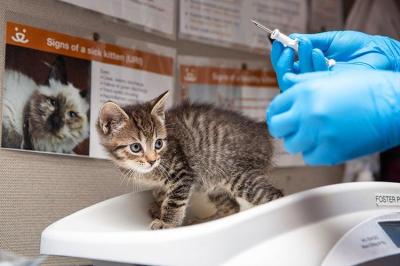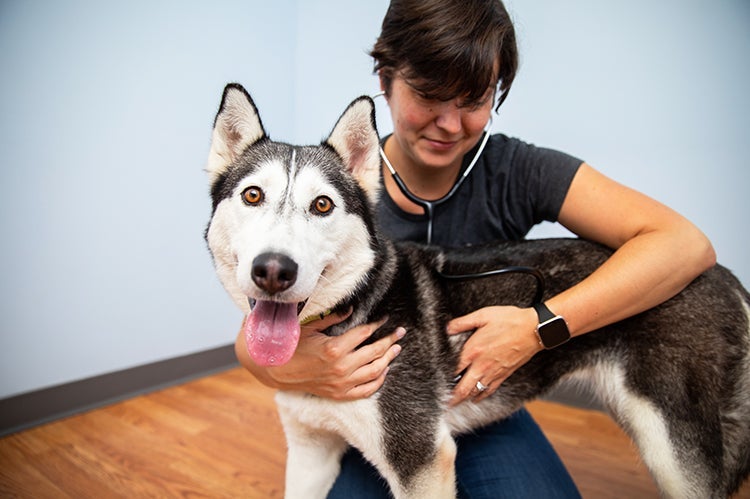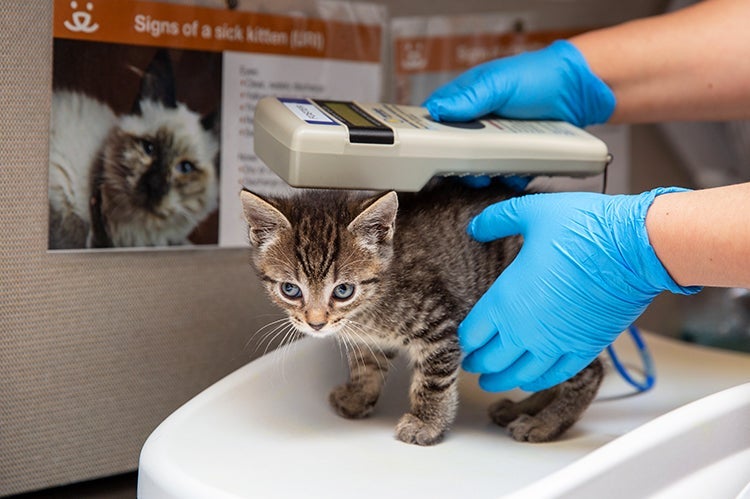
Using Pet Microchips to Find Lost Pets
Pet microchips are an invaluable tool to help reunite lost pets with their people, keeping families together and helping to reduce the number of homeless pets. They essentially act as permanent identification tags, so even if a lost pet isn’t wearing a collar or other ID, they can still be traced back to their family.
The microchip itself is a tiny electronic chip encased in a glass cylinder — roughly the size of a grain of rice — that’s implanted under an animal’s skin. When lost pets are found, they will likely be scanned for a chip. Most veterinary clinics, animal shelters, and even some police and fire stations have universal microchip scanners, which work on all types of pet microchips, and they will usually scan pets for free. Scanning a microchip brings up an identification number that’s unique to the pet. That number can then be searched in a pet microchip database to find contact information for the animal’s family.
Are you considering having your pet microchipped, or do you already have a microchip and are wondering how it works? Here is some helpful information to know about pet microchips and finding lost pets.
Where to get a cat or dog microchip
Many veterinary clinics and animal shelters provide pet microchips, and the cost of a microchip can vary. Animal welfare organizations all across the country often hold clinics where they offer low-cost or free microchips to the public, and pets adopted from animal shelters and rescue groups might already come microchipped.
How microchips are implanted
For cats and dogs, microchips are generally placed under the skin between their shoulder blades using a hypodermic needle. The process is similar to a pet receiving a vaccination; it’s safe, quick, and requires no anesthesia or surgery. It can be done during a typical vet exam or even when the animal is under anesthesia for another procedure, such as spay/neuter surgery.
Home starts with you

How to register a pet microchip
Implanting the microchip is just one part of using this technology. The other critical part is registering your pet’s microchip so that when it’s scanned and someone looks up the microchip's identification number, it connects with your contact information. (It’s also critical to regularly check your registry information to make sure it’s accurate and up to date.)
When you have your pet microchipped or adopt a pet who’s already microchipped, you will typically be given information about registering that chip. The different chip manufacturers maintain their own registries, but there are also registries that accept chips from multiple manufacturers. The American Animal Hospital Association maintains a pet microchip registry lookup to help you find the manufacturer where your pet’s chip has been registered.
It’s usually free to register, though some manufacturers provide additional paid services. And you choose how much contact information to provide — e.g., your phone number, email address, home address, contacts for multiple people, etc. You can also add important information about your pet’s health. There are safeguards in place so that only certain people, such as vet or shelter staff, can access your information.
Microchips vs. pet tracking tools
Pet microchips are not a tracking device like a GPS collar. They don't have GPS capabilities (or even batteries), so you can’t remotely track your cat or dog’s whereabouts using their chip. The pet must be present to be scanned with a microchip scanner. The scanner uses radio waves to activate the chip, which then sends the pet’s identification number to the scanner, along with information about the chip manufacturer. Then, the pet can be looked up in the manufacturer’s microchip registry.

How long pet microchips last
Microchips for pets are built to last around 25 years. While it is possible that a chip might move slightly, they generally stay close to the injection site. And it’s rare for them to fall out if they were implanted by a trained professional. Of course, there is the chance that a microchip could become faulty. So to ensure that your pet’s microchip is working properly, you can ask your vet to scan it during routine visits.
What else to know about finding a lost pet
A microchip is just one part of the equation to help you find a lost pet. It’s still a good idea for your pet to wear a collar with an ID tag that includes your contact information. That way, if someone who doesn’t have a microchip scanner finds your lost pet, they can still quickly contact you to get your pet back home.
If your pet is lost, you’ll want to report that to your microchip registry. This is also the time to verify that all your info on the registry is up to date.
Plus, spread the word about your missing pet throughout your community. Call local shelters and vet clinics to see whether they’ve taken in your pet — and keep checking back with them. Make a post on pawboost.com, which sends out alerts about lost and found pets. And post on neighborhood social media groups, as well as your own social media. Ask friends and family to do the same. You can also create a missing pet flyer to post around your neighborhood.
While some missing pets make it back home within hours, finding a lost pet can take time. Don’t give up! Pets can be amazingly resilient and resourceful, and persistence is often the key to finding them. It’s quite common for people to take in lost pets and assume they have no home, so your continued efforts to find your pet can make all the difference for a happy reunion.
